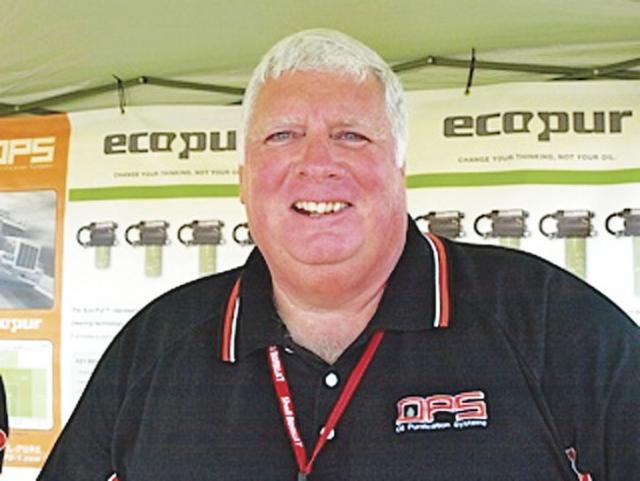Understanding Oil Contaminants

One of the questions I hear often is “why does it take 24-48 hours to process my sample, when I can get it done in a few minutes at a truck stop?” The answer is that the truck stop uses a desktop analyzer that tests for a few of the wear metals, viscosity, fuel, soot and glycol. The lab used by OPS tests for 31 different components including all wear metals, contaminant metals, multi-source metals, oil additives, fuel dilution, soot, water, viscosity, base number, oxidation and nitration. The desktop model can provide effective results for oil that is being changed every cycle, but for an extended drain program you should use an advanced mobile test kit from an accredited lab. The additional information on oil additive package, base number, oxidation, nitration etc. will ensure the oil quality is within guidelines to ensure proper engine protection until the next sampling or drain cycle.
<!-- /* Font Definitions */ @font-face {font-family:"Cambria Math"; panose-1:2 4 5 3 5 4 6 3 2 4; mso-font-charset:0; mso-generic-font-family:roman; mso-font-pitch:variable; mso-font-signature:-536870145 1107305727 0 0 415 0;} @font-face {font-family:Calibri; panose-1:2 15 5 2 2 2 4 3 2 4; mso-font-charset:0; mso-generic-font-family:swiss; mso-font-pitch:variable; mso-font-signature:-536859905 -1073732485 9 0 511 0;} @font-face {font-family:"ITC Clearface"; panose-1:2 11 6 4 2 2 2 2 2 4; mso-font-alt:Calibri; mso-font-charset:0; mso-generic-font-family:auto; mso-font-format:other; mso-font-pitch:variable; mso-font-signature:3 0 0 0 1 0;} /* Style Definitions */ p.MsoNormal, li.MsoNormal, div.MsoNormal {mso-style-unhide:no; mso-style-qformat:yes; mso-style-parent:""; margin-top:0in; margin-right:0in; margin-bottom:8.0pt; margin-left:0in; line-height:107%; mso-pagination:widow-orphan; font-size:11.0pt; font-family:"Calibri",sans-serif; mso-ascii-font-family:Calibri; mso-ascii-theme-font:minor-latin; mso-fareast-font-family:Calibri; mso-fareast-theme-font:minor-latin; mso-hansi-font-family:Calibri; mso-hansi-theme-font:minor-latin; mso-bidi-font-family:"Times New Roman"; mso-bidi-theme-font:minor-bidi;} .MsoChpDefault {mso-style-type:export-only; mso-default-props:yes; font-size:11.0pt; mso-ansi-font-size:11.0pt; mso-bidi-font-size:11.0pt; font-family:"Calibri",sans-serif; mso-ascii-font-family:Calibri; mso-ascii-theme-font:minor-latin; mso-fareast-font-family:Calibri; mso-fareast-theme-font:minor-latin; mso-hansi-font-family:Calibri; mso-hansi-theme-font:minor-latin; mso-bidi-font-family:"Times New Roman"; mso-bidi-theme-font:minor-bidi;} .MsoPapDefault {mso-style-type:export-only; margin-bottom:8.0pt; line-height:107%;} @page WordSection1 {size:8.5in 11.0in; margin:.5in .5in .5in .5in; mso-header-margin:.5in; mso-footer-margin:.5in; mso-paper-source:0;} div.WordSection1 {page:WordSection1;} -->The accredited labs analyze the oil on equipment
that costs upwards of $500,000 and follow strict testing guidelines established
by the American Society for Testing and Materials (ASTM). Test procedures are
administered by trained certified technicians. The test results are then sent
to a certified analyst for evaluation and recommendations. A typical oil sample
will undergo testing on 8 or more different analysis machines and may receive
additional extensive individualized analysis if the standard testing produces
any unusual abnormalities. The sampling equipment is calibrated by the Quality
Control Supervisor and certified accurate before and after each sample
run. Comparing certified sample
materials to test results ensure proper calibration of equipment, adherence to
sample protocol and accuracy of test results.
Think of the difference between a desktop sample
and a fully accredited lab as; the difference between your family doctor ordering
basic blood work, to determine any deficiencies compared to The Mayo Clinic
running a full battery of blood work with a full body scan etc. The basic blood
work may tell you to avoid sugar or you need more iron in your diet. But the
full scan will discover any deficiencies or health issues you may have and
suggest the proper course of action to ensure you a healthy life.
Recently the question came up as to why the additive
metals section of the oil sample results seem to have an unusual amount of
abnormal results reported. The reason is that oil companies do not always
update the labs timely when they change formulations. The lab may have old
information that the Calcium should be between 1200-1400 ppm for a certain oil
type and tested oil has 1500 therefore an abnormal result would be noted. The oil
additives: Boron, Magnesium, Calcium, Barium, Phosphorous and Zinc are not used
in the same concentrations by every oil manufacturer. Some may substitute
Magnesium for Calcium to enhance the base package, others may use Boron to
extend oil life etc. In addition, when
additives are blended into the oil they may not blend evenly. Taking a 4-ounce
sample from a 7500-gallon tanker, a 55-gallon drum or a gallon bottle will most
like not produce exactly the same readings.
The key to ensuring the additive package is meeting the guidelines is to
know how the total base number is holding up and how well the Zinc is
protecting engine from excessive wear.
One thing that should also be taken into
consideration is that when you drain oil there is always some residue left in
the engine. If you change oil types or add a different brand / grade of oil the
residue or new formulation may contain oil additives that the new oil type
doesn’t utilize. This will be reported as an abnormality but should not be a
cause for concern.
I hope you were able to attend the Mid America
Truck Show this year and were able to find products that will improve your
performance and add to your bottom line. I know that anyone that stopped by the
OPS booth 68216 to discuss oil sampling and the EcoPur System spent their time
wisely and they were able to see ways of improving oil and engine life.
If you have any questions or would like to see
certain topics discussed in this column, please email me at: [email protected]
